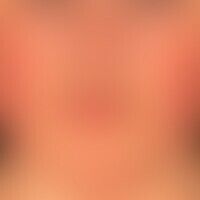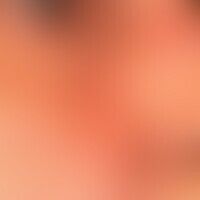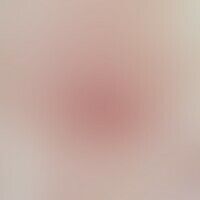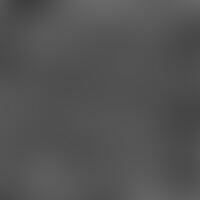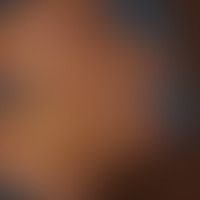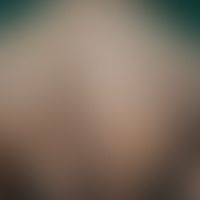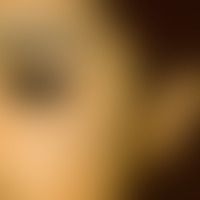Image diagnoses for "Macule"
325 results with 1215 images
Results forMacule
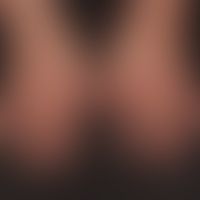
Dermatomyositis (overview) M33.-
Dermatomyositis (overview): Striped arrangement of red papules and plaques, which confluent to flat areas in the area of the end phalanges; strongly pronounced nail fold capillaries.

Vasculitis leukocytoclastic (non-iga-associated) D69.0; M31.0
Vasculitis, leukocytoclastic (non-IgA-associated). multiple, since 1 week existing, on both lower legs localized, irregularly distributed, 0.1-0.2 cm large, confluent in places, symptomless, red, smooth spots (not compressible).
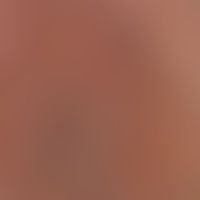
Melanodermatitis toxica L81.4
Melanodermatitis toxica: detailed image with the upper bizarre demarcation line to the unaffected skin.

Chronic actinic dermatitis (overview) L57.1
Dermatitis chronic actinic: An almost sharply defined flat eczema reaction on the back of the hand that has persisted for months and occurred after short gardening.

Parapsoriasis en plaques large L41.4
Parapsoriasis en plaques, large: symptomless, well limited. disseminated stains and plaques. When the skin is wrinkled, a cigarette-paper-like pseudoatrophic architecture of the skin surface is visible (important diagnostic sign!).
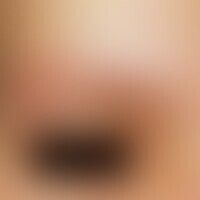
Ulerythema ophryogenes L66.4
Ulerythema ophryogenes. extensive erythema with (scarred) raeration of the eyebrows. between the still persistent eyebrows are dense, fine, hairless follicular papules.
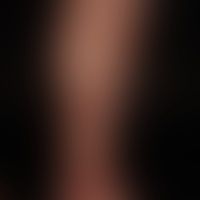
Vasculitis leukocytoclastic (non-iga-associated) D69.0; M31.0
Vasculitis leukocytoclastic (non-IgA-associated): small spotted vasculitis of both lower legs; multiple red spots (redness cannot be suppressed).

Erythema dyschromicum perstans L81.02
Erythema dyschromicum perstans. 54-year-old male. Large grayish-brown patches and spots on the trunk and neck. No itching. No drug history.
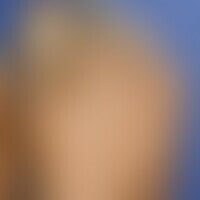
Arterial occlusive disease peripheral I73.9
Peripheral arterial occlusive disease. Necrosis in the area of the 2nd toe in peripheral arterial occlusive disease.
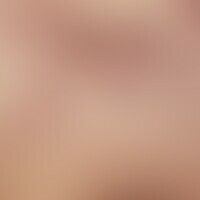
Varice reticular I83.91
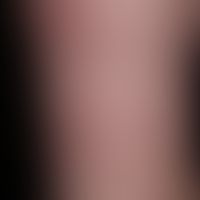
Amyloidosis systemic (overview) E85.9
Systemic amyloidosis: persistent purpura (see legend in previous figure).

Lentiginosis L81.4
Acquired lentiginosis: acquired (solar) lentiginosis due to years of excessive UV exposure.
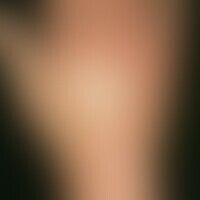
Iris diaphragm phenomenon I73.8
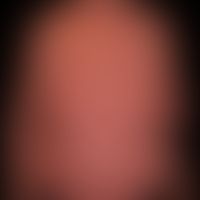
Erythrodermia L53.9
Erythroderma under vemurafenib therapy; pronounced keratosis areolae mammae (acquisita).
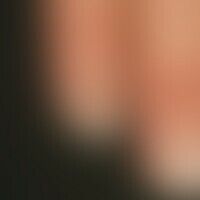
Striated leukonychia L60.8
Leuconychia striata: Detail: The 48-year-old patient reported a color change (blue-white) of the finger ends within the last 6 months and additionally noticed the formation of white horizontal stripes on the nail plate.

Argyria L81.8
Argyrie: diffuse, completely symptom-free brown coloration of the facial areas in the area of exposed areas, which does not recede even in the winter months.

